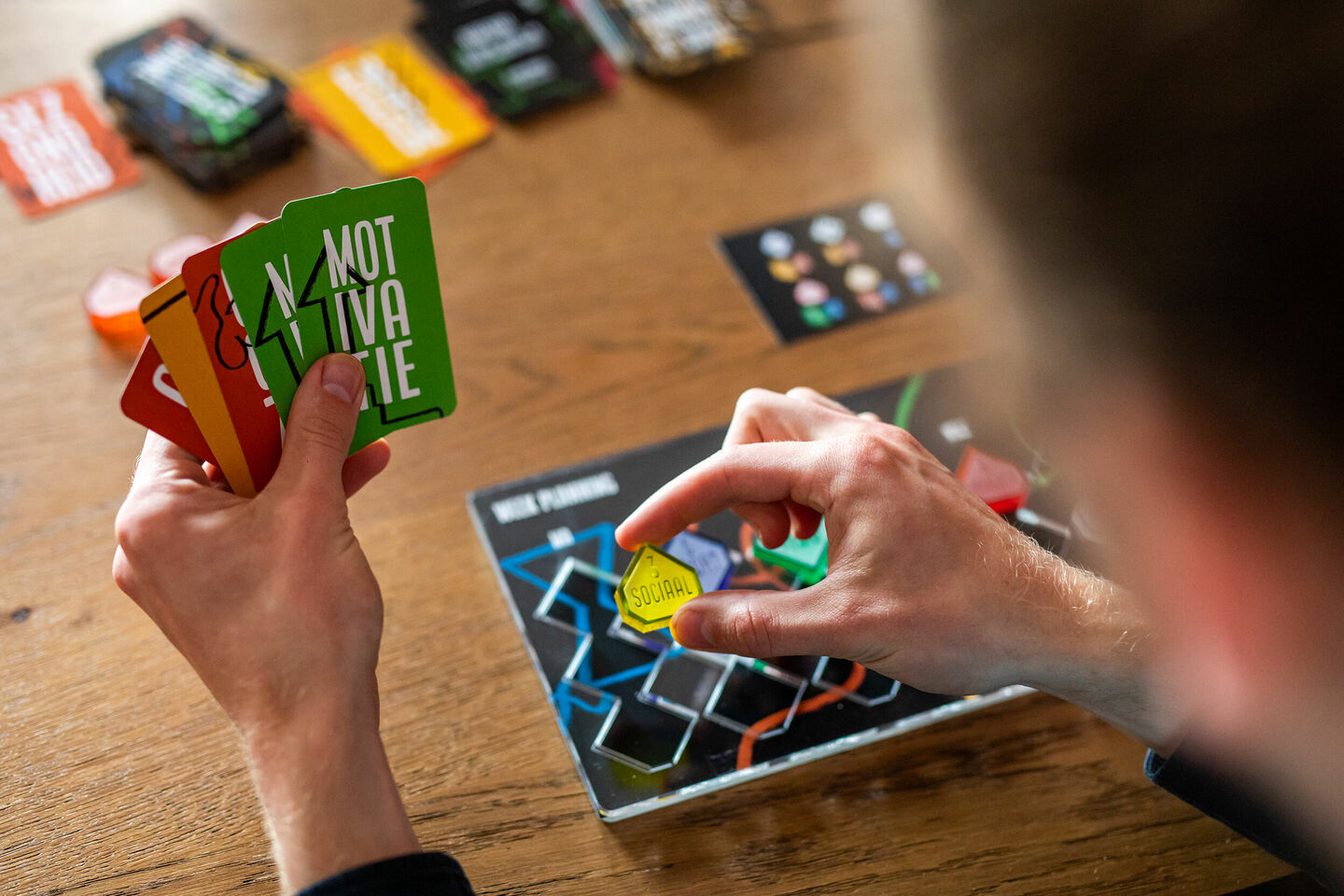
Being ill isn't a game, right?
A board game for high schoolers with cystic fibrosis
Lieke Vermeulen designed a game for her graduation project, a board game specially for teenagers with cystic fibrosis. It enables them to give their peers a sense of what it's like to live with a life-changing chronic disease. The master's student of Industrial Design drew inspiration from games such as Catan and Ticket to Ride. “I started by playing countless games with pen and paper to hand.”
Imagine, you have a disease that shapes your life, but you're also an adolescent going to high school for the very first time, surrounded by new classmates. “Many doctors stress how important it is for teenagers with CF (cystic fibrosis, ed.) to give a presentation about their disease during their first year of high school. Unfortunately, however, at that age a class talk sometimes goes in one ear and out the other,” says Lieke Vermeulen (25).
And so the master's student decided to make the focus of her graduation project in game design (Industrial Design) a board game for CF patients aged thirteen to seventeen, their friends and classmates. “By creating engagement – players feel involved – the game makes the information stick.” It’s All in the Game is the name of the game.
How did Lieke get involved with this disease? “I'm a photographer and in that role I was asked to go to Sweden and Austria as a volunteer with Skate4AIR, a non-profit that organizes long-distance skating events to raise money for CF research. On these trips I got to know some CF patients, many of them young people. They shared their stories with me, and for me that was an enriching experience. I wanted to give something back to the CF community, and hope to do that with the game.”
Growing up quickly
Some 1600 people in the Netherlands have cystic fibrosis. The Dutch name for this is actually very descriptive: taaislijmziekte. In this disease (ziekte) the mucus membranes secrete mucus (slijm) that is too tacky and viscous (taai). This is problematic for various parts of the body, such as the lungs, Lieke explains. “Often patients spend the first hour of their day coughing up mucus and using a nebulizer. The mucus in the airways provides a breeding ground for pathogenic bacteria.”
The disease cannot be cured and the available treatments aim only to keep the disease ‘doable’ . This is all very difficult to grasp for the patient's peers
Children with CF are forced to grow up quickly because the disease greatly affects their daily life, Lieke says. “They have to be alert to every little cough and often spend weeks at a time in the hospital. Before every meal they have to take medicines because CF hinders the absorption of nutrients.” The disease cannot be cured and the available treatments aim only to keep the disease – in Lieke's words – “doable” . This is all very difficult to grasp for the patient's peers, especially because you can't tell by looking that someone has CF.
Since 2011 CF has been diagnosed using the heel prick routinely performed on every newborn baby. Treatment can then be started immediately, a development that has increased patient life expectancy considerably: from 18 to 20 years to upwards of fifty today. This has made it necessary to reassess the medicines in use. At a stroke it became relevant to discover their long-term effects on the patient's health. Lieke's project gave her an in with an alliance working in this area. The parties involved are the Wilhelmina Children's Hospital, Utrecht University and UMC, WUR and TU/e.
Azul
To prepare for her project, Lieke dove into not the library but the games cupboard. “Whenever I played a game, and I played a lot, I made a note of what I did and didn't enjoy about it. It’s All in the Game has elements of various games, including Catan, Ticket to Ride and Azul.”
She also drew inspiration from her graduation mentor Max Birk and a manual for game designers. “What I learned from that is how to make a game fun to play time and time again: you build in multiple winning strategies. Just think of Catan: players can build villages, aim to become the dominant knight, or go for the longest trade route.”
Washable
Sadly, patients with CF are at risk from one another. “That's got to do with the harmful bacteria carried by someone with CF and the ease with which that bacteria can infect other CF patients. So they are forced to keep their distance from each other, from the very people uniquely placed to know what they're going through,” says Lieke.
A young person with CF had to recognize their own experience in the game, but above all the game had to be FUN to play
She set herself a requirement: CF patients had to be able to play her game together. “That's why each player has their own board. These are washable boards made of plastic. And there are plenty of game cards so that in a single game the players never touch the same cards.”
Stomach ache
During the design process Lieke was constantly seeking a balance between “getting across the facts about CF” and “designing a playable game”. A young person with CF had to recognize their own experience in the game, but above all the game had to be FUN to play.
During the game every player has to do various activities: go to social events, do things for school, and go to the physiotherapist, for example. All the while, each player has to balance their resources – health, energy, time, and motivation – just like any CF patient. There are also chance cards. These are things like ‘You didn't take enough pills before your meal and now you have stomach ache. Miss a turn.’
“It was a case of making one little change at a time and then testing it. Otherwise it would have been impossible to work out what had caused a change in the game. Some elements were right first time, such as the resource cards. I made some changes to the squares on the board, like that you can't go to the physio at the weekend because they're closed.”
Birthday
What happens now? “The next step is to have fifteen sets made to give to young people with CF, to let them test the game over a long period. That's the only way to iron out the final ‘errors’, the ones that only occur when a particular combination of circumstances arises.”
So it will be a while before the game is completely ready. “I'm still busy with it, but now I've also started working as a hybrid teacher at ID, as a freelance photographer, and as a coordinator for an organization that does youth work.” In the meantime, the high schoolers with CF with whom Lieke collaborated are becoming impatient. “They keep asking, When's it going to be ready? I want to ask for it for my birthday! But it's my dream that eventually the game will be available free of charge to every thirteen year old with CF. After all, the patients and their parents have enough to pay for as it is.”

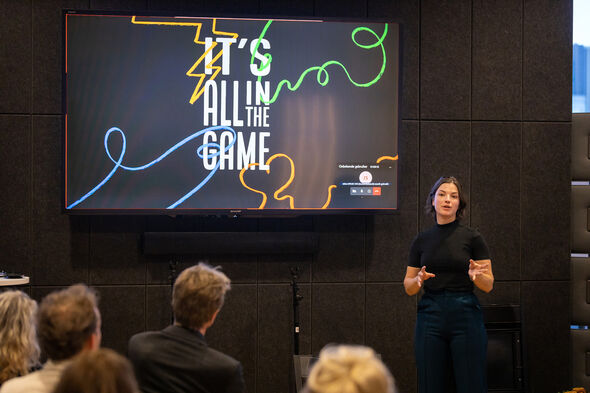
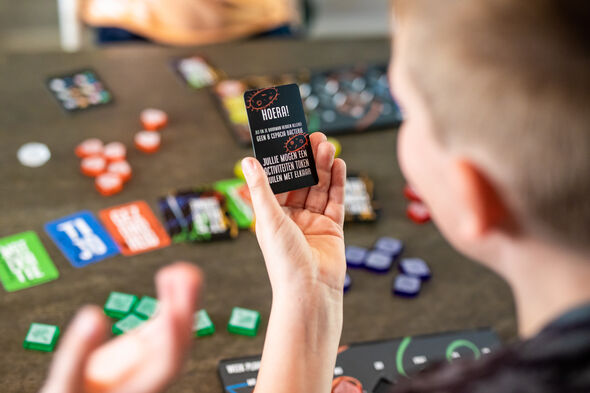
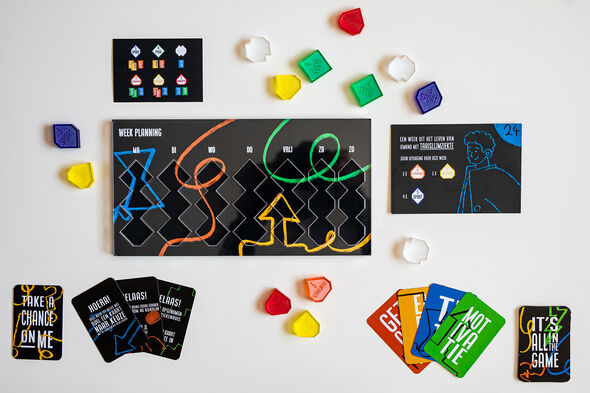
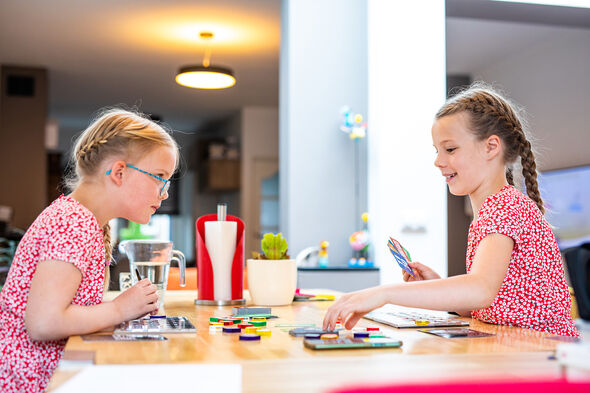
Discussion